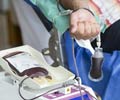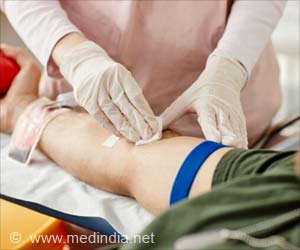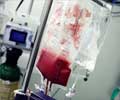Dr. Gautam Wankhede, Director of Medical Affairs at Mylab Discovery Solutions, has provided us with some key facts about safe blood donation. Let's take a look at them.

‘In India, excessive blood loss during childbirth and a scarcity of blood in hospitals to replace the lost blood account for 25% of maternal deaths. #BloodDonation, #SafeBloodDonation’





Let's look at some facts about safe blood donation shared by Dr. Gautam Wankhede, Director of Medical Affairs, Mylab Discovery Solutions: Safe blood is essential in all healthcare facilities to ensure appropriate treatment and minimise preventable mortality. One in four maternal deaths in India is due to excess loss of blood and shortage of blood in hospitals to replenish lost blood. This problem is further compounded by the high prevalence of anaemia in India. More than one million new people are diagnosed with cancer each year. Many of them will need blood, sometimes daily, during their chemotherapy treatment. A single-car accident victim can require as many as 100 units of blood.
Blood safety relies deeply on finding the correctly matched compatible blood in a timely manner that has been accurately screened for transmissible infections. Transfusion Transmitted infections (TTIs) are of significant concern for blood safety.
Increased Risk of Transfusion-Transmitted Infections for Recipients
In India, serological screening is mandatory for all donated blood for hepatitis B virus (HBV), hepatitis C virus (HCV) and human immunodeficiency virus (HIV), Malaria, and Syphilis. Out of these, the first three are the most critical. Out of the above, in the case of HIV, HBV, and HCV, the window period, where the screening result can be negative in spite of the presence of infection in the blood donor, is an important factor (1✔ ✔Trusted SourcePrevalence and trends of hepatitis B virus, Hepatitis C virus, Human immunodeficiency virus 1, 2 and syphilis infections among blood donors in a regional transfusion center in Punjab, India: A 3 years study
Go to source).
The current mandatory screening tests for blood donors in India for the above infections are based on serological techniques (not molecular) and this would mean that donors in the window period of infection may not be detected thereby increasing the risk of TTIs for those who receive blood.
The prevalence of HIV, HBV, and HCV in India is much higher than in most of the developed world.
Advertisement
Blood shortages can occur due to various factors, such as increased demand during emergencies or natural disasters, lower donation rates during holidays or vacation periods, and challenges in maintaining an adequate supply of rare blood types. These shortages highlight the importance of regular blood donations to sustain blood banks throughout the year.
One Donation has the Potential to Save Up To Three Lives
Blood donations are not solely used for direct transfusions. Blood can be processed into various components, including red blood cells, plasma, platelets, and cryoprecipitate. These components undergo further processing to create essential blood derivatives used in treating specific medical conditions such as hemophilia, immune disorders, and burns.Advertisement
Donating blood from time to time is linked to lower blood pressure and a lower risk for heart attacks as per some studies. People with a condition called hereditary hemochromatosis must have blood removed regularly to prevent the build-up of iron.
Blood safety relies on public awareness and education. Promoting knowledge about the importance of blood safety, encouraging regular blood donations, and addressing common misconceptions help build a strong culture of blood safety within communities.
In conclusion, safe blood plays a crucial role in healthcare systems, and its availability relies on voluntary unpaid donations, rigorous testing, and careful screening procedures. Blood safety is a multifaceted process that encompasses stringent donor screening, comprehensive testing for infectious diseases, advanced technologies like NAT and pathogen reduction, proper blood typing, storage, transportation, and adherence to quality control measures.
Reference:
- Prevalence and trends of hepatitis B virus, Hepatitis C virus, Human immunodeficiency virus 1, 2 and syphilis infections among blood donors in a regional transfusion center in Punjab, India: A 3 years study - (https://www.ncbi.nlm.nih.gov/pmc/articles/PMC7529155/)
Source-IANS













